SaaS Growth: How Cloud Software Drives Success in Business
-

-
Shivendra Saxena
10 Jan, Wed
Content
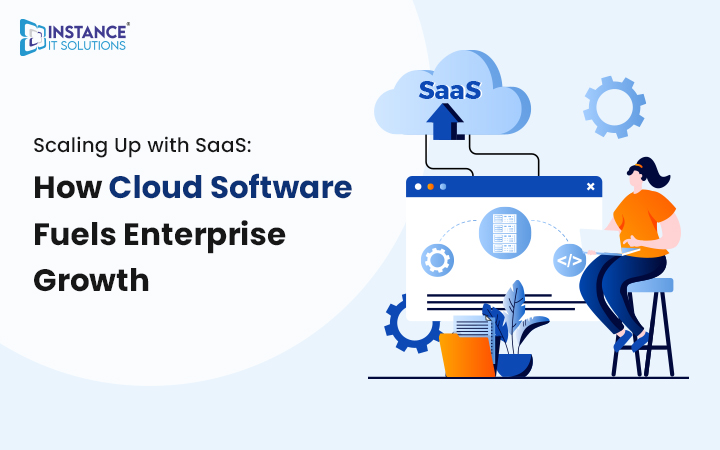
Introduction
In today's dynamic business landscape, the significance of Software as a Service (SaaS) cannot be overstated. As enterprises navigate the path of growth and scalability, SaaS emerges as a pivotal catalyst, reshaping traditional approaches to business operations.
Let’s explore the fundamental role of SaaS in enterprise growth, delving into its definition and highlighting the importance of cloud software in the current business environment.
Significance Of SaaS in Enterprise Growth
The rapid evolution of technology has ushered in a new era for businesses, where adaptability and innovation are key to survival. SaaS stands out as a game-changer in this scenario, offering a flexible solution that empowers enterprises to meet the challenges of a dynamic marketplace.
SaaS goes beyond conventional software models by providing applications through the cloud, eliminating the need for complex installations and infrastructure.
This accessibility facilitates seamless collaboration, accelerates time-to-market, and enhances overall operational efficiency, positioning businesses for sustainable growth.
Software as a Service, or SaaS, refers to a software distribution model where applications are hosted by a third-party provider and made available to customers over the Internet.
Unlike traditional software deployment models, SaaS eliminates the burden of maintenance, updates, and infrastructure management for the end-users.
One of the key advantages of SaaS lies in its scalability.
As businesses expand, the demand for robust and flexible solutions intensifies. SaaS accommodates this need by allowing organizations to scale their software usage seamlessly.
Whether it's adding more users or integrating additional features, SaaS adapts to the evolving requirements of a growing enterprise. Moreover, SaaS fosters collaboration and remote work by enabling access to applications from anywhere with an internet connection.
This flexibility not only enhances productivity but also accommodates the modern workforce's preferences, driving employee satisfaction and retention.
Cloud Software in The Current Business Landscape
Cloud software, of which SaaS is a significant component, plays a pivotal role in reshaping the business landscape. The cloud offers a secure and centralized platform for data storage, processing, and application delivery. This accessibility ensures that businesses can operate efficiently, regardless of geographical constraints, fostering a globalized and interconnected marketplace. The cost-effectiveness of cloud-based solutions further adds to their appeal.
With SaaS, enterprises can avoid the upfront capital expenditures associated with traditional software implementations. Instead, they can opt for subscription-based models, paying for the services they use, making it a financially prudent choice for businesses of all sizes.
SaaS emerges as a transformative force in scaling up businesses, offering agility, scalability, and cost-effectiveness. As cloud software continues to redefine the business landscape, enterprises embracing SaaS are poised for not only survival but growth in the market.
SaaS has evolved from a niche solution to a mainstream business tool, revolutionizing how companies operate. Initially, SaaS catered to specific needs, but its flexibility, scalability, and cost-effectiveness gradually propelled it into the mainstream.
As businesses sought agility and efficiency, SaaS emerged as the go-to model, replacing traditional software installations. Today, its widespread adoption across diverse industries underscores its transformation into an indispensable and integral component of modern business operations, facilitating collaboration, scalability, and innovation on a global scale.
Advantages Of Scaling Up with SaaS
In the dynamic landscape of modern business, Scaling Up with SaaS has become a strategic imperative for enterprises aiming for growth, efficiency, and competitiveness.
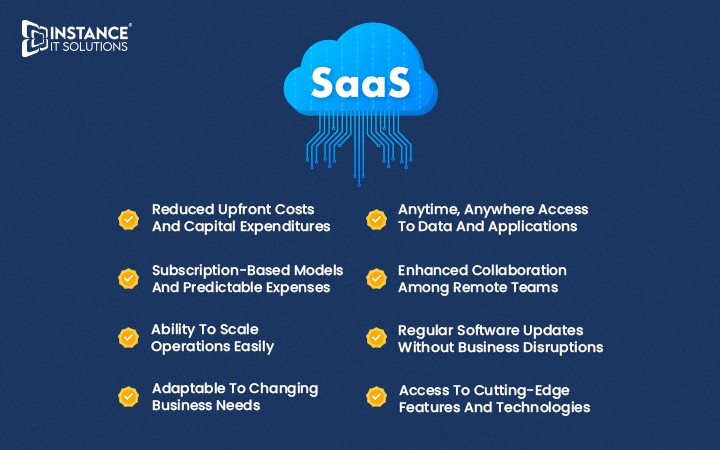
Reduced Upfront Costs and Capital Expenditures
One of the most significant advantages of scaling up with SaaS is the substantial reduction in upfront costs and capital expenditures.
Traditional software implementations often involve hefty initial investments in hardware, infrastructure, and licenses. SaaS, on the other hand, operates on a subscription-based model, eliminating the need for substantial upfront payments.
This cost-effective approach enables businesses to redirect capital towards core activities, fostering financial flexibility and resource optimization.
Subscription-Based Models and Predictable Expenses
SaaS leverages subscription-based pricing models, allowing businesses to pay for software services on an ongoing basis. This predictable expense structure proves advantageous for budgeting and financial planning, as organizations can accurately forecast and manage their software-related expenditures.
Additionally, the subscription model often includes maintenance, updates, and support, further streamlining costs and ensuring transparency in financial commitments.
Ability To Scale Operations Easily
The scalability of SaaS is a game-changer for businesses experiencing growth. As organizations expand, the demand for scalable solutions becomes paramount.
SaaS accommodates this need effortlessly, allowing businesses to scale their software usage in tandem with their growth. Whether it's adding more users, increasing storage, or expanding functionality, SaaS provides the flexibility to scale operations without the traditional constraints associated with in-house IT infrastructure.
Adaptable To Changing Business Needs
Business landscapes are inherently dynamic, requiring enterprises to adapt swiftly to changing conditions. SaaS, with its cloud-based architecture, offers great adaptability.
The modular nature of many SaaS applications allows businesses to customize their software stack according to evolving requirements. This adaptability ensures that enterprises can promptly respond to market shifts, regulatory changes, and emerging trends, positioning them as agile and resilient players in their respective industries.
Anytime, Anywhere Access to Data and Applications
SaaS breaks down the barriers of geographical constraints and traditional office setups by providing anytime, anywhere access to data and applications.
With an internet connection, users can access SaaS applications from various devices, promoting remote work and enhancing operational efficiency. This accessibility not only caters to the modern workforce's preferences but also facilitates business continuity, ensuring that operations can continue seamlessly irrespective of location.
Enhanced Collaboration Among Remote Teams
In a world where remote work is increasingly prevalent, collaboration tools are essential. SaaS applications, designed with collaboration in mind, foster teamwork among dispersed teams. Features such as real-time document editing, virtual meetings, and collaborative project management empower remote teams to work cohesively.
This enhanced collaboration not only boosts productivity but also contributes to a more inclusive and connected organizational culture.
Regular Software Updates Without Business Disruptions
SaaS providers take responsibility for maintaining and updating the software, ensuring that businesses always have access to the latest features and security patches.
Unlike traditional software, which often requires significant downtime for updates, SaaS updates occur seamlessly in the background. This minimizes disruptions to business operations, allowing organizations to stay current without sacrificing productivity.
Access To Cutting-Edge Features and Technologies
SaaS platforms are at the forefront of technological innovation. Subscribers benefit from continuous access to cutting-edge features and functionalities without the need for additional investments. This democratization of innovation ensures that businesses, regardless of size, can leverage the latest advancements in software technology.
Future Trends in SaaS and Enterprise Growth
As SaaS continues to evolve, future trends in enterprise growth include the integration of advanced technologies like artificial intelligence. Tailored, industry-specific solutions are on the rise, promising to reshape business processes and decision-making. These trends anticipate a dynamic landscape, fostering innovation and efficiency in diverse business sectors.
AI And ML Are Enhancing SaaS Capabilities
The integration of Artificial Intelligence (AI) and Machine Learning (ML) into SaaS platforms is poised to revolutionize enterprise operations.
These technologies are augmenting SaaS capabilities by providing intelligent insights, automation, and predictive analytics. AI-driven algorithms enhance data analysis, allowing businesses to derive meaningful patterns and make data-driven decisions.
ML, in particular, enables SaaS applications to learn and adapt, optimizing processes over time. The incorporation of AI and ML in SaaS has a profound impact on business processes and decision-making. Automation of routine tasks streamlines workflows, freeing up resources for more strategic endeavors.
The predictive capabilities of AI assist in forecasting trends and identifying opportunities, contributing to more informed and timely decision-making.
As these technologies evolve, SaaS becomes not just a tool for efficiency but a strategic asset for businesses looking to gain a competitive edge through intelligent insights.
Specialized SaaS Offerings for Different Industries
The future of SaaS is increasingly moving towards industry-specific solutions. Rather than adopting generic software, businesses are opting for specialized SaaS offerings tailored to the unique needs of their respective industries.
This trend is driven by a recognition that one-size-fits-all solutions may not fully address the intricacies of specific sectors. Industry-specific SaaS applications cater to the nuances of businesses, offering targeted features and functionalities that enhance efficiency and compliance. The demand for customization of SaaS is on the rise.
Businesses seek flexibility in adapting software to their specific requirements. Industry-specific SaaS solutions enable customization, allowing organizations to integrate applications seamlessly into existing workflows. This trend reflects a shift towards a more client-centric approach, where SaaS providers work closely with businesses to understand their challenges and deliver solutions that align with them.
Conclusion
In the dynamic landscape of enterprise growth, the journey to scalability and success is increasingly intertwined with the transformative power of Software as a Service.
As explored in this blog, SaaS stands out as a catalyst, reshaping traditional paradigms and propelling businesses toward unparalleled growth.
The advantages of scaling up with SaaS, from cost savings and flexibility to continuous innovation, underscore its pivotal role in modern business operations.
SaaS not only reduces upfront costs and offers scalability but also fosters accessibility and collaboration, essential elements in today's dispersed and digital work environments.
The ability to adapt to changing business needs and the seamless integration of cutting-edge technologies, such as AI and ML, position SaaS as a strategic asset for enterprises looking to navigate the complexities of a rapidly evolving marketplace.
Looking ahead, the future trends in SaaS, including AI and ML integration and industry-specific solutions, herald a new era of possibilities for enterprise growth.
As businesses increasingly recognize the need for tailored solutions and intelligent insights, SaaS emerges not just as a tool but as a dynamic partner in the pursuit of sustained success.
In embracing the transformative capabilities of SaaS, enterprises unlock a pathway to efficiency, innovation, and resilience, ensuring they are not just scaling up but thriving in the digital age.
We are trusted by over 650+ clients.
Join them by using our services and grow your business.
Request a callbackRequest a callback


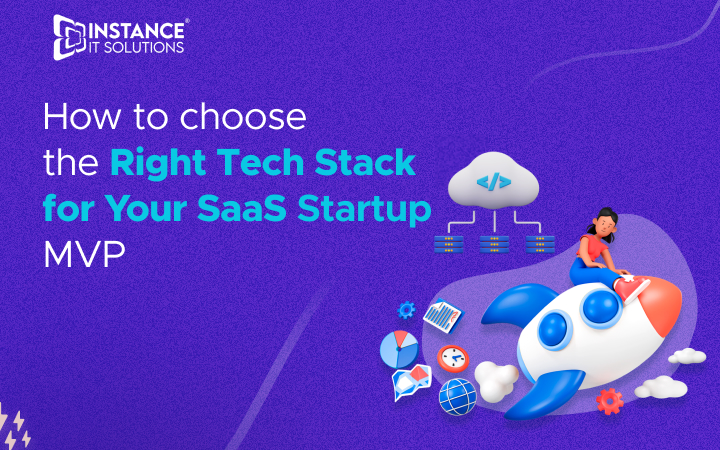
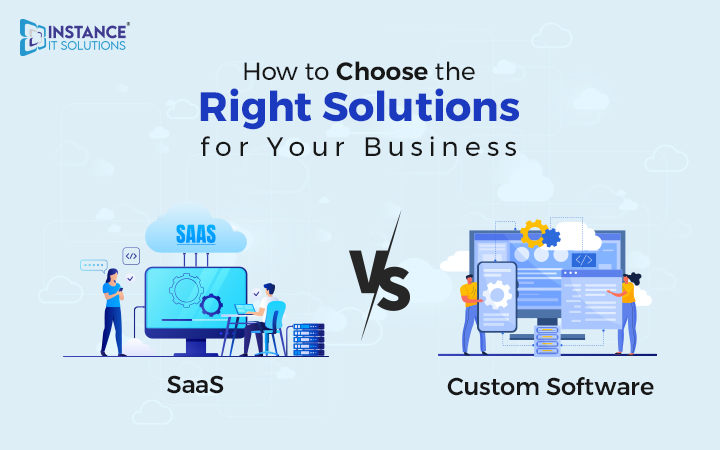
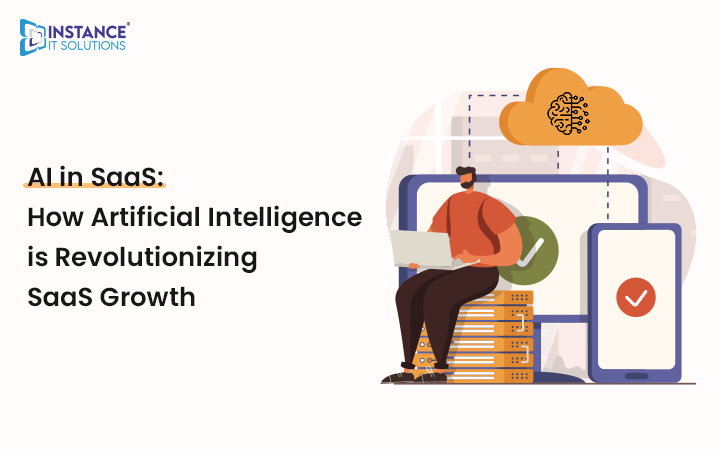
 Contact Us
Contact Us
